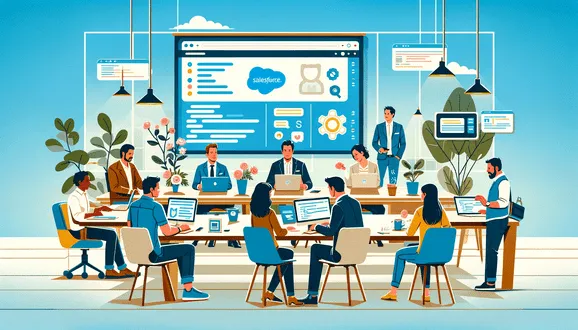
Salesforce Lightning Web Components (LWC) is a powerful, modern framework for building dynamic and responsive user interfaces within the Salesforce ecosystem. Utilizing standard web technologies like HTML, JavaScript, and CSS, LWC enables developers to create efficient and scalable applications seamlessly integrated with the Salesforce platform. This framework is designed to enhance the user experience, improve performance, and facilitate easier development compared to traditional Salesforce development methods.
Did You Know?
LWC is built on the latest JavaScript standards, embracing ES6+ features like classes, modules, and decorators. By leveraging these standards, LWC ensures that developers can work with a familiar syntax, allowing for a cleaner, more maintainable codebase that aligns with modern web development practices.
Interviews focusing on Salesforce LWC are typically conducted for roles such as Salesforce Developers, Salesforce Front-end Developers, and Salesforce Architects. These roles demand a deep understanding of LWC, including its integration with Salesforce’s core features and external systems. The interview process is designed to evaluate candidates’ technical expertise in building and managing LWC-based solutions, their problem-solving skills, and their ability to leverage LWC for creating innovative, user-centric Salesforce applications.
List of 110 Salesforce LWC Interview Questions and Answers
- Specific Scenario-Based Salesforce LWC Interview Questions with Answers
- How would you pass the list of records from ParentComponent to ChildComponent?
- How would you detect and handle a record selection in ChildComponent and ensure the parent component is only notified if the selection is different from the previous one?
- How would you handle the recordselected event in ParentComponent and access the selected record?
- How would you prevent ChildComponent from re-rendering unnecessarily if ParentComponent passes an identical list of records?
- How would you handle scenarios where multiple child components need to communicate their selected records back to ParentComponent?
- Junior Salesforce LWC Interview Questions and Answers
- Middle-level LWC Interview Questions and Answers
- Interview Questions and Answers for Experienced LWC Developers
- Scenario-Based Interview Questions for Salesforce LWC Developers
- Technical/Coding LWC Interview Questions
- 5 Tricky Salesforce LWC Interview Questions and Answers
- How does LWC achieve better performance than Aura components?
- What are the best practices for handling component communication in LWC?
- What are decorators in LWC, and how are they applied?
- How does the Lightning Data Service (LDS) integrate with LWC?
- What are common challenges in debugging LWC, and how are they resolved?
Specific Scenario-Based Salesforce Lightning Web Components Interview Questions with Answers
In Lightning Web Components, you have a parent component (ParentComponent) and a child component (ChildComponent). ParentComponent has a list of records that it passes to ChildComponent. The requirement is to display the list in ChildComponent and allow the user to select one record from the list. When a record is selected in ChildComponent, an event should be fired to inform ParentComponent of the selection, but only if it is a different record than the previously selected one.
How would you pass the list of records from ParentComponent to ChildComponent?
Answer: In ParentComponent, you would define the list of records as a JavaScript property (e.g., recordList) and bind it to an @api property in ChildComponent. For example:
// ParentComponent.js
recordList = [...] // your list of recordsIn ChildComponent, define an @api property:
// ChildComponent.js
@api records;This allows ParentComponent to pass recordList to ChildComponent for display.
How would you detect and handle a record selection in ChildComponent and ensure the parent component is only notified if the selection is different from the previous one?
Answer: In ChildComponent, maintain a local property to track the previously selected record (e.g., previousSelection). When a new selection is made, check if it differs from previousSelection. If it does, update previousSelection and fire a custom event to notify ParentComponent of the selection:
// ChildComponent.js
previousSelection;
selectRecord(record) {
if (this.previousSelection !== record) {
this.previousSelection = record;
this.dispatchEvent(new CustomEvent('recordselected', { detail: record }));
}
}
This ensures the event is only fired if the selection changes.
How would you handle the recordselected event in ParentComponent and access the selected record?
Answer: In ParentComponent, use an event listener to handle the recordselected event emitted by ChildComponent. This listener receives the selected record in the event detail:
// ParentComponent.js
handleRecordSelected(event) {
const selectedRecord = event.detail;
// Handle the selected record, e.g., update UI or trigger actions
}
This allows ParentComponent to access the selected record whenever the selection changes.
How would you prevent ChildComponent from re-rendering unnecessarily if ParentComponent passes an identical list of records?
Answer: Use @track or computed properties carefully in ChildComponent and avoid modifying records unless the data actually changes. In ParentComponent, you could implement a check to compare the previous recordList with the new list using JSON.stringify (or a custom comparison function if lists are large) to ensure the data has changed before re-passing it to ChildComponent. This reduces re-renders caused by passing identical lists.
How would you handle scenarios where multiple child components need to communicate their selected records back to ParentComponent?
Answer: In ParentComponent, use a unique identifier for each child component and assign it when rendering multiple instances. In ChildComponent, include the identifier in the recordselected event detail. In the event handler, use this identifier to track each child component’s selected record individually:
// ParentComponent.html
<c-child-component key={child1} onrecordselected={handleRecordSelected}></c-child-component>
<c-child-component key={child2} onrecordselected={handleRecordSelected}></c-child-component>
// ParentComponent.js
handleRecordSelected(event) {
const selectedRecord = event.detail.record;
const childKey = event.detail.key;
// Use childKey to differentiate between child component instances
}
This approach lets ParentComponent manage multiple selections without confusion among child instances.
Junior Salesforce LWC Interview Questions and Answers
- What is Salesforce LWC?
Answer: Salesforce Lightning Web Components (LWC) is a programming model for developing web components on the Salesforce Lightning Platform. It leverages modern web standards and can coexist with Aura components.
- Can you explain the difference between LWC and Aura components?
Answer: LWC is a modern framework based on standard web technologies, offering improved performance and simplicity. Aura is an older framework that’s more feature-rich but also more complex.
- What are the key features of Lightning Web Components?
Answer: Key features include native browser capabilities, improved performance, ease of use with standard JavaScript, and compatibility with other web standards.
- How do you pass data from a parent component to a child component in LWC?
Answer: Data is passed from parent to child components using properties. The child component declares a property with @api decorator, which can be set by the parent component.
- What is the purpose of the @track decorator in LWC?
Answer: The @track decorator is used to mark a field as reactive. This means if the value of the field changes, the component will re-render.
- How do you handle events in LWC?
Answer: Events in LWC are handled using event listeners. We can add an event listener in the template or use the addEventListener method in JavaScript.
- What are some of the lifecycle hooks available in LWC?
Answer: Lifecycle hooks in LWC include connectedCallback, disconnectedCallback, renderedCallback, errorCallback, and constructor.
- What do you call an Apex method from a Lightning Web Component?
Answer: Apex methods can be called from a Lightning Web Component by importing the method and then invoking it within the JavaScript class.
- What is a wire service in LWC?
Answer: The wire service is a reactive way of reading Salesforce data in LWC. It allows components to be dynamically refreshed when data changes.
- How do you ensure data binding in LWC templates?
Answer: Data binding in LWC templates is achieved through the use of JavaScript expressions in the HTML template, enclosed within curly braces {}.
- Can you explain the use of slots in LWC?
Answer: Slots are placeholders in a component’s HTML template that can be filled with custom markup by the component’s users, allowing for content composition.
- How do you make an LWC component public or private?
Answer: An LWC component is made public by setting the @api decorator on its public properties and methods. Without @api, the properties or methods are private.
- What is the use of the @wire decorator in LWC?
Answer: The @wire decorator is used to call Apex methods, fetch data from Salesforce, or listen to a message channel, in a reactive way.
- How can you handle styling in LWC?
Answer: Styling in LWC can be handled using standard CSS which is scoped to the component. LWC also supports CSS custom properties for dynamic styling.
- What is the role of @salesforce/schema in LWC?
Answer: @salesforce/schema is used to import Salesforce schema references (like object and field names) into an LWC, ensuring robustness against changes in the org.
- How do you use JavaScript to manipulate the DOM in LWC?
Answer: JavaScript can manipulate the DOM in LWC using standard methods. However, direct DOM manipulation is discouraged in favor of data binding and reactive properties.
- What are some best practices for error handling in LWC?
Answer: Best practices include using try-catch blocks in JavaScript, handling server-side errors gracefully, and providing informative user feedback.
- How do you test Lightning Web Components?
Answer: LWC can be tested using the Jest testing framework, which allows for writing unit tests for the JavaScript part of the component.
- Can LWC be used outside of the Salesforce platform?
Answer: Yes, LWC can be used outside of Salesforce on any platform that supports modern JavaScript, with the LWC Open Source version.
- What is the significance of the render() method in LWC?
Answer: The render() method in LWC is a lifecycle hook used to customize the rendering of the component, allowing developers to conditionally render different templates.
These salesforce lightning interview questions cover the basics of LWC development, focusing on understanding the framework, its functionalities, and its application in the Salesforce ecosystem, making them suitable for junior-level roles.
Insight:
When interviewing candidates for Junior Salesforce Lightning Web Components (LWC) roles, it’s essential to assess their foundational understanding of the LWC framework and its application in Salesforce. The LWC interview questions Salesforce should explore their knowledge of basic concepts like component communication, lifecycle hooks, reactivity, and event handling, as well as their familiarity with modern JavaScript. This level of inquiry is crucial to identify individuals who not only grasp the technical aspects of LWC but also demonstrate the potential for growth and adaptability in the dynamic Salesforce environment.
Middle-level LWC Interview Questions and Answers
- How does the rendering lifecycle work in LWC?
Answer: In LWC, the rendering lifecycle starts with the creation of the component, followed by rendering, insertion into the DOM, and re-rendering as needed when data changes.
- Explain how to use getters and setters in LWC.
Answer: Getters and setters in LWC allow you to define reactive properties. Getters return a value and are re-evaluated when dependent data changes, while setters are used to execute code when a property is set.
- How can you optimize performance in LWC applications?
Answer: Performance can be optimized by minimizing component re-renders, efficient data fetching, using lazy loading, and reducing the use of JavaScript in templates.
- Describe the communication pattern between nested LWC components.
Answer: Communication between nested components in LWC is usually handled through public properties, custom events for parent-child communication, and using a pub-sub model for sibling or disconnected component communication.
- How do you secure data in LWC?
Answer: Data security in LWC is managed by Salesforce’s Locker Service which isolates components in namespaces, enforcing strict security rules and preventing unauthorized access to data.
- What is the purpose of the @api decorator in LWC?
Answer: The @api decorator is used to expose public properties and methods of a component, making them accessible to other components.
- How do you test and debug LWC?
Answer: Testing can be done using Jest for unit tests. Debugging is typically done using browser developer tools, Salesforce’s debugging tools, and console logs.
- Explain how conditional rendering works in LWC.
Answer: Conditional rendering in LWC is achieved using JavaScript expressions in the template. Components or HTML elements can be rendered conditionally based on these expressions.
- What are slots in LWC, and how do you use them?
Answer: Slots are placeholders in a component’s HTML template, used to insert content from parent components. They provide a way to compose components dynamically.
- How do you handle state management in LWC?
Answer: State management can be handled using reactive properties, JavaScript classes, and sharing state through parent components or using a pub-sub model for complex scenarios.
- Can you integrate LWC with third-party JavaScript libraries?
Answer: Yes, third-party JavaScript libraries can be integrated into LWC, but they should be used cautiously and must be uploaded as static resources in Salesforce.
- Describe how you would use the wire service to fetch data from Salesforce.
Answer: The wire service is used by annotating a function or property with @wire to automatically fetch data from Salesforce, such as Apex methods or Salesforce data.
- How can you use LWC in a Visualforce page?
Answer: LWC can be used in a Visualforce page by utilizing Lightning Out, which enables the embedding of LWC components in Visualforce.
- Explain the use of imperative Apex in LWC.
Answer: Imperative Apex in LWC is used to call Apex methods imperatively (not reactively) by invoking them directly in JavaScript when specific conditions are met.
- What are some common decorators in LWC and their uses?
Answer: Common decorators include @api for public properties/methods, @track for reactive private properties, and @wire for reactive data fetching or message subscribing.
- How do you make an LWC component available for Salesforce Flow?
Answer: To make an LWC component available in Flow, you need to expose it using the lightning__FlowScreen target in the component’s metadata file.
- What are best practices for CSS styling in LWC?
Answer: Best practices include keeping styles scoped to the component, leveraging CSS custom properties for theming, and avoiding overly complex selectors.
- How do you handle error messages in LWC?
Answer: Error messages can be handled using the lightning-platform-show-toast-event for user-friendly notifications or custom error handling mechanisms within the component.
- Can LWC be used on any standard Salesforce page layout?
Answer: Yes, LWC can be used on most standard Salesforce page layouts by adding the component to the page through the Lightning App Builder.
- How do you handle mobile responsiveness in LWC?
Answer: Mobile responsiveness in LWC can be managed using standard CSS media queries and flexible layout systems like CSS Flexbox or Grid.
These LWC salesforce interview questions are designed to evaluate a middle-level LWC specialist’s ability to deal with more complex scenarios, their proficiency in advanced aspects of LWC, and their understanding of integrating LWC in the broader Salesforce ecosystem.
Insight:
For middle-level Salesforce LWC roles, the interview process should delve into candidates’ proficiency in complex component design and data handling. It’s crucial to evaluate their ability to optimize performance, integrate advanced functionalities, and apply best practices in security and responsive design.
These interviews should also assess candidates’ understanding of Salesforce-specific tools like Lightning Data Service (LDS) and Apex integration, as well as their ability to work with large datasets and asynchronous operations. By focusing on these areas, interviewers can gauge both the candidates’ technical depth and their practical problem-solving abilities within the Salesforce LWC framework, ensuring they can effectively contribute to and elevate Salesforce projects.
Interview Questions and Answers for Experienced LWC Developers
- How do you approach architecting a large-scale Salesforce LWC application?
Answer: I focus on modular design, efficient state management, and scalable data handling strategies, while ensuring the application adheres to Salesforce best practices and performance optimization.
- Describe a challenging LWC project you led and the outcome.
Answer: [Discuss a specific LWC project, highlighting the challenges faced, your approach to solving them, and the impact on the project’s success.]
- How do you ensure LWC components are performant and efficient?
Answer: Performance is ensured through efficient data fetching, minimizing DOM manipulation, using lazy loading, and optimizing JavaScript and CSS.
- What is your strategy for handling complex state management in LWC?
Answer: For complex state management, I use centralized state management patterns, possibly leveraging third-party state libraries or custom solutions built on reactive principles.
- Explain how you integrate LWC with external systems and APIs.
Answer: Integration involves using Apex for server-side API calls or direct client-side fetch/AJAX calls, while handling CORS and security considerations.
- How do you mentor junior developers in LWC best practices?
Answer: I mentor through code reviews, sharing best practices, providing hands-on examples, and encouraging continuous learning and experimentation.
- Describe your process for conducting code reviews in LWC projects.
Answer: My code review process involves ensuring adherence to coding standards, checking for performance implications, and validating the overall design and logic of the components.
- How do you handle version control and deployment strategies for LWC projects?
Answer: I use Git for version control, adhering to a branching strategy like Git Flow, and implement CI/CD for automated testing and deployment.
- What challenges have you faced in LWC migration projects and how did you overcome them?
Answer: [Share specific challenges such as migrating from Aura to LWC, handling compatibility issues, and your strategies for a smooth transition.]
- How do you ensure accessibility in your LWC applications?
Answer: Accessibility is ensured by following WAI-ARIA guidelines, implementing keyboard navigation, screen reader support, and ensuring UI elements are accessible.
- Discuss your approach to error handling and logging in LWC.
Answer: Error handling involves using try-catch blocks, user-friendly error messages, and logging errors to the server for further analysis.
- How do you approach testing in LWC?
Answer: Testing involves unit testing with Jest, integration testing, and end-to-end testing, ensuring each component functions correctly both independently and within the application.
- Explain how to optimize LWC components for mobile devices.
Answer: Optimization for mobile involves responsive design, considering touch interactions, optimizing loading times, and testing on various devices.
- How do you handle security concerns in LWC development?
Answer: Security is managed by adhering to Salesforce’s security best practices, using secure coding patterns, and regularly reviewing and updating code for vulnerabilities.
- What is your experience with using Lightning Data Service in LWC?
Answer: I have used Lightning Data Service for efficient data operations, leveraging its caching mechanism, and reducing the need for Apex calls.
- How do you manage localization and internationalization in LWC?
Answer: Localization is handled using custom labels, platform-supported methods for date and currency formatting, and ensuring UI components adapt to different languages.
- Discuss a time you utilized custom events in LWC for component communication.
Answer: [Share an example of how you used custom events to facilitate communication between loosely coupled components in a complex application.]
- How do you stay updated with the latest developments in Salesforce LWC?
Answer: Staying updated involves following Salesforce releases, participating in Salesforce communities, attending webinars and conferences, and continuous experimentation.
- Explain your approach to documenting LWC projects.
Answer: Documentation includes detailed code comments, maintaining a project wiki or README files, and ensuring that architectural decisions and component interfaces are well documented.
- How do you balance feature development with technical debt in LWC projects?
Answer: Balancing involves prioritizing feature development while allocating time for refactoring, addressing technical debt proactively, and maintaining a sustainable pace of development.
These salesforce lightning web components interview questions aim to gauge a senior-level candidate’s expertise in LWC, their ability to lead projects, implement best practices, and make strategic decisions in the development process.
Insight:
For senior Salesforce LWC roles, the interview process should emphasize not only technical mastery but also strategic thinking and leadership in complex LWC projects. Candidates should demonstrate advanced problem-solving skills, an ability to mentor others, and a knack for optimizing component performance and integration. These interviews are pivotal in identifying candidates who can navigate the challenges of large-scale LWC applications and drive innovation, Sales SKIs Salesforce ensuring they can lead and elevate Salesforce LWC development to align with organizational goals.
Scenario-Based Interview Questions for Salesforce LWC Developers
- A LWC component is not rendering as expected. How do you approach troubleshooting?
Answer: I’d start by checking the JavaScript console for errors, review the component’s code, especially the template and JavaScript files, and ensure data bindings are correct.
- You need to design a LWC component that fetches and displays data from a Salesforce object. Describe your approach.
Answer: I’d use the wire service to fetch data reactively from the Salesforce object, then display the data using a combination of HTML and JavaScript in the LWC component.
- How would you handle a requirement to make a LWC component reusable across different Salesforce orgs?
Answer: I’d ensure the component is loosely coupled, uses custom labels for text, and avoids hard-coded values to maintain flexibility and adaptability.
- You’re asked to optimize a slow-loading LWC component. What steps do you take?
Answer: I’d analyze the component’s performance, optimize data fetching, use lazy loading for non-essential features, and streamline the rendering logic.
- A LWC component must update in real-time based on user input. How do you implement this?
Answer: I’d use reactive properties and event handling in LWC to ensure the component updates dynamically as the user provides input.
- How would you integrate a third-party JavaScript library into a LWC component?
Answer: I’d upload the library as a static resource in Salesforce, then import and use it within the LWC component, ensuring it doesn’t conflict with LWC’s reactive nature.
- Describe your process for creating a form in LWC that submits data to Salesforce.
Answer: I’d design the form using HTML and LWC features, capture the input using JavaScript, and use Apex or the wire service to submit the data to Salesforce.
- How do you ensure a LWC component meets accessibility standards?
Answer: I’d use semantic HTML, ARIA roles, keyboard navigation, and ensure that the component is compatible with screen readers.
- You need to build a LWC component that communicates with an Aura component. How do you proceed?
Answer: I’d use custom events for communication from LWC to Aura and Aura’s attribute and method mechanism for communication back to LWC.
- A LWC component should display different UI elements based on user permissions. How do you handle this?
Answer: I’d use Salesforce’s user permission and role data, fetched either through Apex or wire service, to conditionally render UI elements in the component.
- How do you handle error messages and exceptions in a LWC component?
Answer: I’d use try-catch blocks in JavaScript for error handling and display user-friendly error messages using the platform’s toast notifications or custom modal pop-ups.
- You’re tasked with converting an existing Visualforce page to LWC. What is your approach?
Answer: I’d analyze the Visualforce page’s functionality, replicate the logic and UI in LWC, and ensure feature parity while leveraging LWC’s modern capabilities.
- Describe the process of creating a dynamic table in LWC that allows users to edit data inline.
Answer: I’d create a table using HTML in LWC, use JavaScript for handling inline edits, and update the Salesforce records using Apex or wire service calls.
- How would you ensure the LWC component you developed is mobile-responsive?
Answer: I’d use CSS media queries, test the component on different devices, and ensure it adapts to various screen sizes and orientations.
- Explain how you would implement search functionality in LWC.
Answer: I’d create an input field for search, use an Apex method with @wire or an imperative call to fetch search results, and display them in the component.
- How do you manage state across multiple LWC components on a single page?
Answer: I’d use a combination of event handling for communication and a shared JavaScript service or module to maintain state across components.
- You need to add multilingual support to a LWC component. What steps do you take?
Answer: I’d use custom labels for all text and leverage Salesforce’s built-in language features to dynamically display text in the user’s language.
- How do you implement a feature toggle in a LWC component?
Answer: I’d use a custom metadata type or custom setting in Salesforce to control the feature toggle, and access it in the LWC component to conditionally render the feature.
- A LWC component needs to react to changes in Salesforce records in real-time. How do you achieve this?
Answer: I’d use the Lightning Data Service or platform events in Salesforce to detect changes in records and update the component in real-time.
- Describe how you would use LWC to create a custom chart or visualization.
Answer: I’d fetch the necessary data using Apex or wire service, then use a third-party charting library integrated into the LWC component to create the visualization.
These salesforce LWC scenario based interview questions focus on real-world applications of LWC, challenging candidates to demonstrate their problem-solving skills, technical expertise, and practical knowledge in developing solutions using LWC in the Salesforce ecosystem.
Learn More: Salesforce Analyst Interview Questions
Insight:
Lightning interview questions in Salesforce are invaluable for thoroughly assessing a candidate’s practical application skills, technical expertise, and problem-solving abilities within the platform. These questions help interviewers evaluate the depth of the candidate’s experience in building dynamic, responsive Lightning components, optimizing performance, and integrating Salesforce functionalities, ensuring they can effectively contribute to complex projects and deliver solutions that align with business objectives.
These questions simulate real-world challenges, testing the candidate’s technical expertise in LWC, their capacity to innovate, and adapt to dynamic project requirements.
Such an approach is crucial in identifying individuals who can navigate complex development scenarios, creatively apply LWC functionalities, and contribute effectively to the evolving demands of Salesforce projects, thereby ensuring a robust and adaptable talent acquisition in this specialized field.
Technical/Coding LWC Interview Questions
- What is the significance of the render() method in LWC?
Answer: The render() method in LWC is used to override the default rendering behavior. It can return a custom template based on specific conditions.
- How do you pass a complex object from parent to child in LWC?
Answer: To pass a complex object from a parent to a child component, use an @api decorated property. Ensure the object is correctly serialized and deserialized if necessary.
- Describe how to implement a pub-sub model in LWC.
Answer: Implementing a pub-sub model involves creating a simple messaging service in JavaScript that allows components to subscribe to events/messages and publish them.
- Can you explain how to use decorators in LWC?
Answer: Decorators like @api, @track, and @wire in LWC are used to mark class fields and methods to enhance their behavior, such as making properties reactive or fetching data.
- What do you call a child component’s method from a parent in LWC?
Answer: You can call a child component’s method from a parent component by using the child component’s template reference and invoking the method directly.
- What is the use of the slot tag in LWC?
Answer: The slot tag is used for content projection in LWC, allowing parent components to inject content into a designated part of the child component’s template.
- Explain event propagation in LWC.
Answer: Event propagation in LWC follows the standard DOM event bubbling and capturing phases. Custom events can be configured to bubble up or not.
- How do you handle asynchronous operations in LWC?
Answer: Asynchronous operations in LWC can be handled using JavaScript Promises or async-await syntax, particularly when making API calls or fetching data.
- What are Lightning Data Services, and how are they used in LWC?
Answer: Lightning Data Services (LDS) provide declarative access to Salesforce data and metadata, allowing LWC components to interact with Salesforce data efficiently and securely.
- How do you ensure LWC components are unit testable?
Answer: To ensure LWC components are unit testable, write testable JavaScript code, mock Salesforce modules and resources, and use Jest for testing.
- Describe how to implement error boundaries in LWC.
Answer: Error boundaries in LWC can be implemented by creating a higher-order component that catches errors in its child component tree and displays a fallback UI.
- Can LWC components communicate with Aura components? How?
Answer: Yes, LWC components can communicate with Aura components using standard DOM events, custom events, or a pub-sub mechanism.
- How do you optimize LWC components for large data sets?
Answer: For large data sets, use pagination, lazy loading, and optimize data fetching and processing to prevent performance issues.
- Explain the concept of reactive variables in LWC.
Answer: Reactive variables in LWC automatically cause the component to re-render when their values change. They are declared using the @track decorator.
- How do you manage CSS styling in LWC?
Answer: CSS in LWC is scoped to the component. Global styles can be applied using Salesforce Lightning Design System (SLDS), and CSS variables can be used for dynamic styling.
- Describe how you would create a custom lookup component in LWC.
Answer: A custom lookup component involves creating an input field, handling search queries, displaying results, and allowing users to select a record, all while managing state and events.
- What is the purpose of the wire service in LWC?
Answer: The wire service is a reactive way of accessing data in Salesforce, allowing components to automatically re-render when the underlying data changes.
- How do you implement client-side caching in LWC?
Answer: Client-side caching in LWC can be implemented using JavaScript data structures like Maps or Sets to store and retrieve data efficiently.
- Explain how to handle routing and navigation in LWC.
Answer: Routing in LWC can be handled using the lightning/navigation service to navigate to Salesforce pages, records, or custom URLs.
- How do you ensure your LWC components are secure and adhere to Salesforce security standards?
Answer: Adherence to Salesforce security standards involves following best practices like using user permissions, avoiding DOM manipulation, and using Salesforce data services for CRUD operations.
These Salesforce LWC interview questions and answers for experienced specialists cater to experienced Salesforce LWC developers, probing their ability to handle advanced coding challenges, optimize component performance, and integrate LWC within complex Salesforce solutions.
Insight:
These interviews delve into a candidate’s ability to tackle complex coding challenges, optimize component performance, and integrate LWC in intricate Salesforce solutions. By focusing on practical coding scenarios and problem-solving abilities, recruiters can discern candidates’ proficiency in LWC, ensuring they have the technical acumen and innovative approach necessary to contribute effectively to sophisticated Salesforce projects and drive technological advancements within the platform.
5 Tricky Salesforce LWC Interview Questions and Answers
How does LWC achieve better performance than Aura components?
LWC leverages modern web standards like Shadow DOM and Custom Elements, which offload rendering tasks to the browser. This reduces the need for a proprietary framework, enabling faster loading, improved memory usage, and easier debugging with native browser tools.
What are the best practices for handling component communication in LWC?
For parent-to-child communication, use public properties with the @api decorator. For child-to-parent, fire custom events using CustomEvent. If sibling communication is required, use a shared Lightning Message Service (LMS) to enable decoupled interactions across components.
What are decorators in LWC, and how are they applied?
LDS provides seamless access to Salesforce data without Apex. It supports data caching, error handling, and platform events. Using @wire with getRecord or getListUi, components can fetch records or lists without explicit SOQL queries, improving efficiency.
How does the Lightning Data Service (LDS) integrate with LWC?
LDS provides seamless access to Salesforce data without Apex. It supports data caching, error handling, and platform events. Using @wire with getRecord or getListUi, components can fetch records or lists without explicit SOQL queries, improving efficiency.
What are common challenges in debugging LWC, and how are they resolved?
Challenges include identifying reactive property issues, troubleshooting data binding, or component lifecycle mismatches. These can be addressed using browser dev tools, setting console.log statements in the component’s lifecycle methods, and enabling debug mode in the Salesforce setup.
Conclusion
While Salesforce lightning interview questions and answers provided here are samples, they form a solid foundation for understanding the depth of knowledge and skill required in Salesforce LWC roles. These questions cover a range of complexities, from basic to advanced, suitable for different levels of expertise within the Salesforce ecosystem. They serve as a guide for both interviewers seeking to gauge a candidate’s proficiency and for candidates preparing to demonstrate their capabilities. However, it’s important to remember that each Salesforce project may present unique challenges, and these interview questions for senior Salesforce developer should ideally be adapted or expanded upon to suit specific organizational needs and the ever-evolving landscape of Salesforce development.

Svitlana is a Communications Manager with extensive experience in outreach and content strategy. She has developed a strong ability to create high-quality, engaging materials that inform and connect professionals. Her expertise lies in creating content that drives engagement and strengthens brand presence within the Salesforce ecosystem. What started as a deep interest in Salesforce later transformed into a passion at SFApps.info where she uses her skills to provide valuable insights to the community. At SFApps.info, she manages communications, ensuring the platform remains a go-to source for industry updates, expert perspectives, and career opportunities. Always full of ideas, she looks for new ways to engage the audience and create valuable connections.

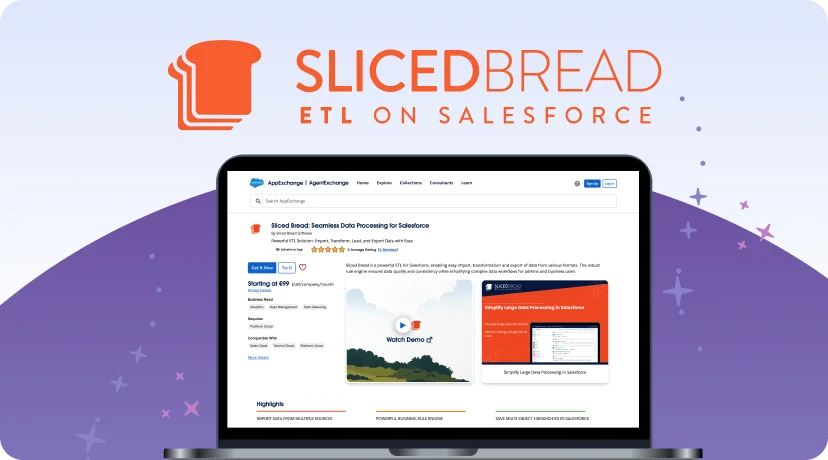
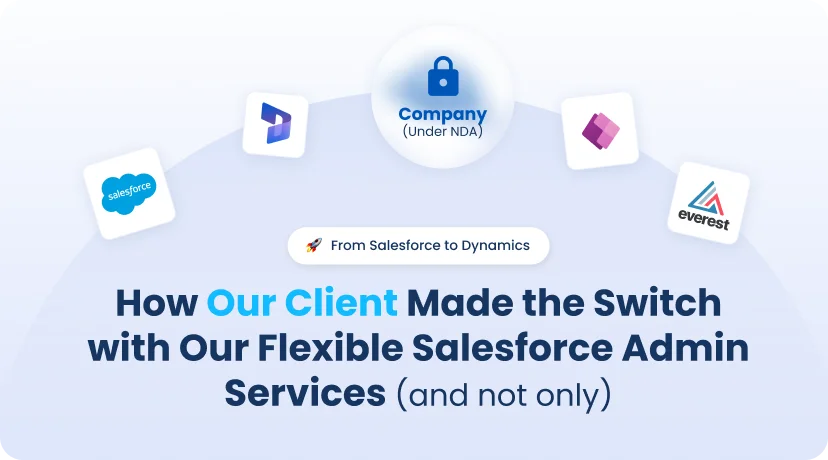
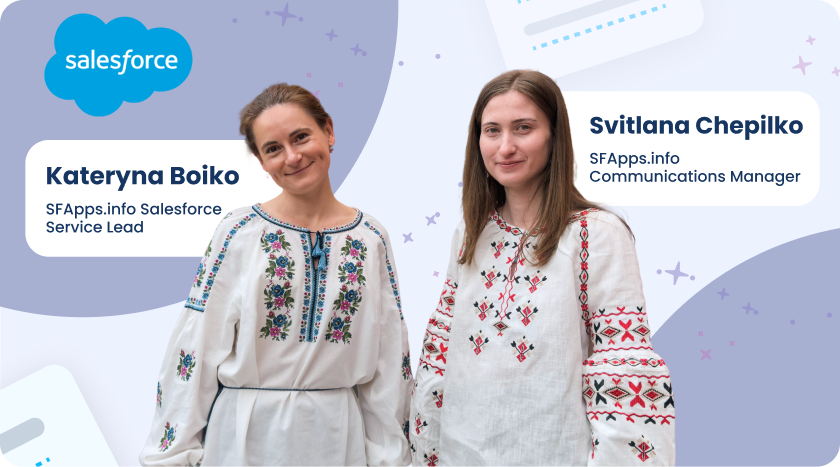

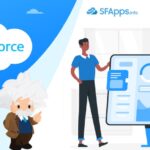 Previous Post
Previous Post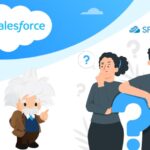 Next Post
Next Post
Master the Basics: Make sure you’re well-versed in LWC’s fundamental concepts, such as component lifecycle, reactive properties, and component communication. Be ready to explain these concepts and their significance.
Use Real-World Examples: Share specific instances from your experience where you applied LWC best practices to solve problems. Detail the challenges, your solutions, and the results to demonstrate practical knowledge.
Optimize for Performance: Discuss strategies you use for enhancing LWC performance, like lazy loading and efficient data handling. Explain why these optimizations matter.
Emphasize on Testing: Talk about your approach to testing LWCs, including unit and integration tests. Mention any tools you prefer, showcasing your commitment to quality.
Prioritize Accessibility and Security: Highlight how you ensure your LWCs are accessible and secure, using ARIA attributes for accessibility and adhering to security best practices.
Style with Best Practices: Describe how you maintain consistent styling in your LWCs, utilizing Salesforce Design System and custom CSS while keeping styles encapsulated.
Discuss Version Control and Deployment: Share your experience with managing LWC development and deployment through version control systems and CI/CD tools.
Keep Learning: Mention how you stay updated with LWC and Salesforce developments, showing your dedication to continuous learning.
Ask Meaningful Questions: Prepare insightful questions about the company’s use of Salesforce and LWC, demonstrating your interest and providing a platform to showcase more of your knowledge.
Showcase Your Work: If possible, present a portfolio of your LWC projects. This could be through a GitHub repository, Salesforce org demos, or a presentation with code snippets and outcomes.
This streamlined approach helps you communicate your LWC expertise clearly and effectively, making you a standout candidate.
Good luck on your next Salesfrorce interview!